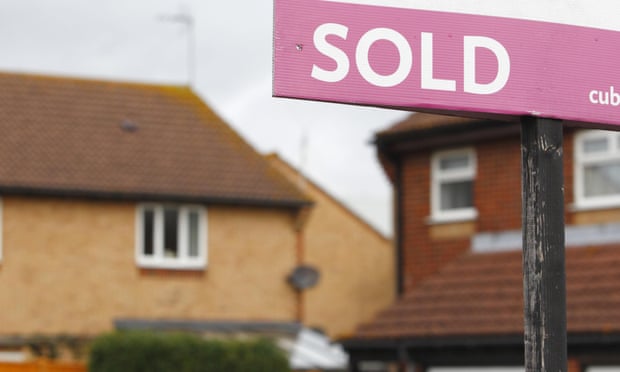UK house prices rose by 9.5% in 2015, figures from the country’s biggest mortgage lender show, in the biggest increase since 2006, before the financial crisis.
Halifax’s latest monthly report showed the average price of a home in the UK rose by 1.7% in December 2015, to hit a new high of £208,286.
The annual growth rate, which is based on a comparison of the three months to the end of December with the same period of the previous year, is the highest since 2006.
Halifax’s figures, which are based on mortgages agreed by the lender during the month and are seasonally adjusted, show that between December 2014 and 2015 the average cost of buying increased by £18,858.
The increase in price over the year has driven it to 5.58 times the average full-time earnings of a male worker: its highest level since January 2008.
Hansen Lu, property economist at Capital Economics, said prices were “becoming increasingly out of kilter with earnings”. He added: “With high prices restraining transaction volumes more and more, we think the market needs to take a breather soon.”
The bank’s housing economist, Martin Ellis, said the quarterly growth rate had slowed in the final two months of the year, “indicating a possible slight softening in the underlying rate of price growth”.
However, he said a continued lack of homes for sale would mean further increases in 2016.
“There remains, however, a substantial gap between demand and supply with the latest figures showing a further decline in the number of properties available for sale,” he said. “This situation is unlikely to change significantly in the short term, resulting in continuing upward pressure on prices.”
Jonathan Hopper, managing director of search firm Garrington Property Finders, said 2015 had ended much as it began, with demand for homes outstripping supply in many areas.
“If the start of 2015 was hampered by caution as some sectors of the market paused to wait out the election, there are no such reservations this January,” he said.
“With interest rates set to stay low for some time and buyer confidence strong, demand continues to surge.”
Halifax’s index has been the most volatile of the major price trackers in 2015, showing monthly changes in the market varying between falls of up to 0.4% and a rise of 2.7%. Meanwhile its annual rise is more than double the 4.5% reported by rival lender Nationwide.
Lu said he suspected that the strength of Halifax’s data “reflects a degree of catch-up”, as over the longer term it was in line with other indices. He added that any changes in mortgage-lending practices by the bank could also have been a factor.
On Monday the government announced plans for 13,000 new homes in the south-east, but experts warned that more would be needed to keep a lid on price rises.
Jeremy Duncombe, director of Legal & General Mortgage Club, said: “Today’s figures from the Halifax show house prices continued to rise in December, ending a year that has seen house prices steadily increase well above inflation and wage growth.
“Without a strong house building programme from the government, this trend will continue well into 2016, making home ownership harder to achieve for many.”


